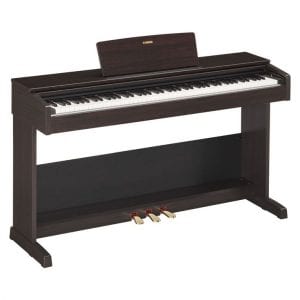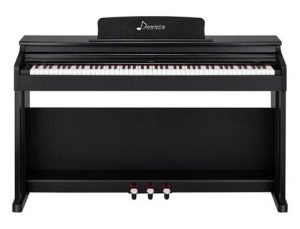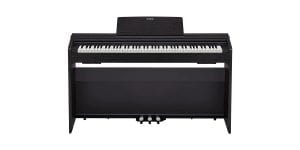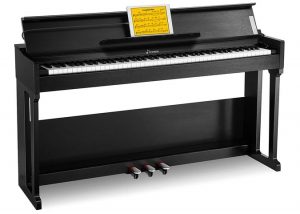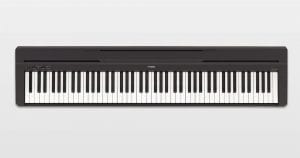Best Digital Pianos for Students (2023)
For students to learn piano lessons, it is mandatory to own a piano to practice the lessons taught in the music school. Buying a grand acoustic piano or an upright console piano could be an expensive endeavor for budding pianists. The best alternative is for them to go with digital pianos. Digital pianos have made significant advances in recent years and are capable of rendering high-quality sound at a relatively low cost. They are also an exceptional alternative for acoustic pianos and suits the needs of amateur pianist. We have chosen and listed the top 5 best digital pianos for students here to help them grow appropriate finger techniques and enhance their piano playing performance.
What are the Best Digital Pianos for Students?
Also check: Best Beginner Digital Pianos & Keyboards 2023
Table of Contents
- What are the Best Digital Pianos for Students?
- Top 5 Best Digital Pianos for Students
- How Should Piano Students Choose Their Digital Piano? How should piano students choose their digital piano?
- What Should a Student Know Before Starting to Play a Digital Piano?
- What Songs Are Easier for a Student to Play on the Digital Piano?
- What Are the Best Songs Students Can Play in a Piano Competition?
- What Are the Benefits of Playing Piano in a Student’s Life?
- What Are Some of the Online Programs That Can Help Students Boost Their Skills and Knowledge?
- Final Words
- Our Recommendation
- You Might Also Like
- Frequently Asked Questions (FAQs)
Top 5 Best Digital Pianos for Students
Digital pianos are much more convenient than their acoustic counterparts. They are easier to move, they are lighter and most of them can be broken down for storage and transport. Some of them are impressively affordable as well. Here is our selection of the top 5 best digital pianos for students.
#1. Yamaha YDP103 – Quality Performing Piano for Students
| Features | Rating |
| Performance and sounds | 9.6 |
| Connectivity | 9.2 |
| Easy to Assemble | 9.7 |
| Build Quality | 9.2 |
| Value for money | 9.6 |
Check Price on Online Stores:
The Arius YDP103 from Yamaha is an 88-key digital piano that features a graded hammer standard keyboard that has been designed to emulate the feel of an acoustic piano. The graded hammer action 88-key piano has a heavier touch at the lower end and a lighter touch at the higher end. This is similar to the hammer action of the keys in the grand acoustic pianos. This GHS hammer action is great for all aspirant piano students, as practicing with the GHS action helps build appropriate finger technique for playing a grand piano.
The matte finish of the black keys of the piano makes the piano, less slippery for long periods. The YDP 103 has improved its traditional advanced wave memory synthesis to deliver real piano sounds. The AWM technology makes use of digital recordings of the sources such as actual instruments that allow students to enjoy grand piano reverberation, irrespective of the place.
The half-damper pedal controls of the piano helps in creating detailed nuances, which is similar to pedaling a grand piano. This feature helps in increasing the lengths of sustained notes continuously, as the sustain pedal is depressed. The piano is also compatible with the digital piano controller app, which features an attractive interface optimized for iOS touch screens.
Pros
- This is a great piano for students and helps them to adjust settings, choose voices and also record piano performances.
- Helps students to combine two voices, such as strings and piano for inspiring new playing experiences.
- There is a standard USB cable that helps connect the piano to a mobile device or computer, to open up to the world of entertainment, creativity, and education.
Cons
- Takes time to assemble and requires assistance
- The piano is not portable and is heavy weighing 82 pounds.
Note: This piano is also featured in our lists of best upright pianos for intermediates and best home digital pianos.
#2. Donner DDP-100 Digital Piano – Quality Budget Pick
Check Price on Online Stores:
This is an exceptional digital piano that comes with a beginner’s bundle comprising a furniture stand, triple pedals, MP3 function, and power adapter. The Donner 88-key fully weighted action digital piano matches the finger strength changes precisely and helps students in restoring the true piano finger strength, for stable piano performance. The piano features a streamlined design and features a wooden cabinet with a sliding key cover to protect the keys.
This is an exceptional piano that helps in testing and adjusting the details of timbre repeatedly, making the sound of the piano feel more realistic and excellent. The piano helps the pianist develops a keen ability to distinguish between different piano sounds. The instrument also supports external sounds or headphones to meet the needs of budding student pianists. The piano has a 128-note polyphony and carries pure tones sampled from real acoustic grand pianos.
Donner is a great piano brand that has been committed to creating new experiences in music performances. The Donner DDP-100 piano is made of high-quality wood and features a three-dimensional soundscape. Its AWM dynamic samples help in producing richer, deeper, and broader sounds and adopt Dream sound sources to analyze realistic sound quality.
Pros
- The piano has a three-pedal system for producing ambient music sounds.
- Its weighted keys help to distinguish sounds clearly and help develop musical sense and intonation.
- The body of the piano is made of medium-density fiberboard and its pedals are made of metal.
- The notes of the piano sound full and rich for budding pianists.
Cons
- The headphone jack is hidden well behind the piano and it needs to be pulled away from the wall for easy access.
- We require a stereo jack plug to connect the Bluetooth adapter to the piano.
Note: This piano is also featured in our lists of best upright pianos for beginners and pianos for composing.
#3. Casio Privia PX-870 – Best Upright Piano for Students
Check Price on Online Stores:
The new flagship model of the renowned Privia line of digital pianos is designed to give a true piano experience for the pianist. The instrument features a revolutionary piano sound and holds a stylish slimline design along with a new sound projection speaker system. The Casio PX-870 features a variety of 19 instrument tones, with the ability to split and layer them as required. The piano has a generous 256 notes of polyphony and assures that even the most complex music performances will sound perfectly natural.
The piano features a Tri-Sensor scaled Hammer action II keyboard that features an incredible feel and captures the dynamics of music performance with unparalleled accuracy and speed. The piano has a powerful 40-watt four-speaker system, which is been designed to envelop the listener, room, and audience with a rich and detailed sound.
Its volume Sync EQ function ensures that the student pianist ensures that they hear a clear and balanced sound, across its entire frequency range, at any volume. The USB connectivity of this piano allows it to be used with a Mac or Windows computer without any need to download any additional drivers. Its AiR sound engine offers highly accurate grand piano sounds along with seamless dynamics for a powerful and remarkably expressive performance.
Pros
- This is a great Casio Privia digital piano that is suitable for piano students of all ages.
- The piano has a wide sound projection system that makes this instrument suitable for all classrooms and other instruments.
- The piano is compatible with iOS and Android devices and it is also compatible with the Chordana music app.
- The piano has a new automatic headphone mode for natural piano sounds.
Cons
- The piano is not portable for students to transport to their music school.
- The body of the piano is made of pressed wood with a plastic foot pedal bar.
Note: This piano is also featured in our lists of best upright pianos for beginners and best digital pianos for teachers.
#4. Donner DDP-90 Digital Piano – Suits All Skill Levels
Check Price on Online Stores:
This is an exceptional piano keyboard for beginners and it is a great instrument for piano students. The Donner DDP-90 piano keyboard features full-size hammer action keys with adjustable touch response. The piano also features high-quality sound samples from real acoustic grand pianos, which makes them suitable for practicing at home, concerts, and stage shows. The Piano also has a 128 polyphony and a three-pedal system to meet the expectations of fast trill playing and for students to create new experiences in music performance.
The 88-key digital piano features weighted hammer action to match the finger strength changes, which is great for early finger development. This electric keyboard is always in tune and it helps beginners acquire and maintain the pitch automatically. The piano is also compatible with multiple devices and comes with a U-disk MP3 player with a built-in amplifier, connectivity with PC and laptop, and features headphone connectivity options as well.
The console-style upright piano has three built-in pedals for three different functions. The soft pedal helps in getting the piano tones soft. The Sostenuto pedal decreases the damper effect and the Sustain pedal helps the pianist to continue playing the previous ones. The Donner DDP-90 also qualifies as a practical and beautiful digital piano with an excellent flip cover. It also features a slow closing function to help protect the keys from dust.
Pros
- The small body of the piano makes it suitable for student dormitories and small rooms.
- Its AWM sampling techniques help with realistic piano sounding and stunning piano performance.
- Its powerful speaker system is designed to envelop the listener with rich sound.
- The flip cover to protect the piano keys is an additional advantage.
Cons
- The black keys are slightly textured and are not as smooth as the white keys in this piano.
- Takes time to assemble the piano.
Note: This piano is also featured in our lists of best upright pianos for beginners and top home digital pianos.
#5. Yamaha P45 – Student’s Piano for the Money
| Features | Rating |
| Performance and sounds | 9.5 |
| Easy to Assemble | 9.7 |
| Connectivity | 9.2 |
| Build Quality | 9.1 |
| Value for money | 9.5 |
Check Price on Online Stores:
This piano comes as a bundle with a furniture stand and bench and the students have options to either use it as a portable and a standalone piano or to assemble in its stand and use it as a standalone piano at home. The one best feature that qualified the Yamaha P45 as one of the best pianos for beginners is its graded hammer standard keyboard, which helps with an authentic piano playing experience. The feel of this piano changes gradually according to its register. It feels heavier while playing the bass parts and it feels lighter while playing the treble parts, which mimics the acoustic piano.
The piano also features a natural and responsive feel and its black keys have a matte finish for an authentic piano-playing experience. The piano is also simple and easy to operate with only one button and many of its settings can be changed with the help of just a single button. The Grand Piano function button gives access to all the selected keys to change voices, play demo sources, and configure the metronome.
The Yamaha P45 leverages the traditional AWM tone generator synthesis system that helps in delivering the stunning sounds of real pianos. The tone and recordings of real instruments help pianists to experience a realistic grand piano sound in all their music-playing endeavors. Above all, this piano features a slim and stylish design with a depth of just 30 cm. It is also lightweight and weighs only 11.5 kg. It can thus be moved anywhere in the home easily and used for performances outdoors.
Pros
- The piano has a graded hammer standard keyboard with 88 keys.
- The keys are sensitive to touch and are great for developing finger strength in students.
- Has all standard connectivity features and connects with sustain pedal as well.
Cons
- The maximum polyphony in this piano is only 64.
- There is no built-in pedal unit or MIDI feature.
Note: This piano is also featured in our lists of the top 15 best pianos in the market and the best pianos for learning.
How Should Piano Students Choose Their Digital Piano? How should piano students choose their digital piano?
Before proceeding with your purchase, prepare a checklist of the best features that you would like your piano to possess.
1. Sounds of the piano: When it comes to piano sounds, there are several factors to pay attention to, including the speakers of the piano and its internal sound library. Choose pianos with maximum polyphony and those that have inbuilt sounds of diverse instruments.
2. MIDI connectivity: This helps in connecting the digital piano with the audio workstation and recording the playing by self. It also connects the piano with smart devices to learn piano lessons in real time. Choose pianos with a USB MIDI connectivity feature.
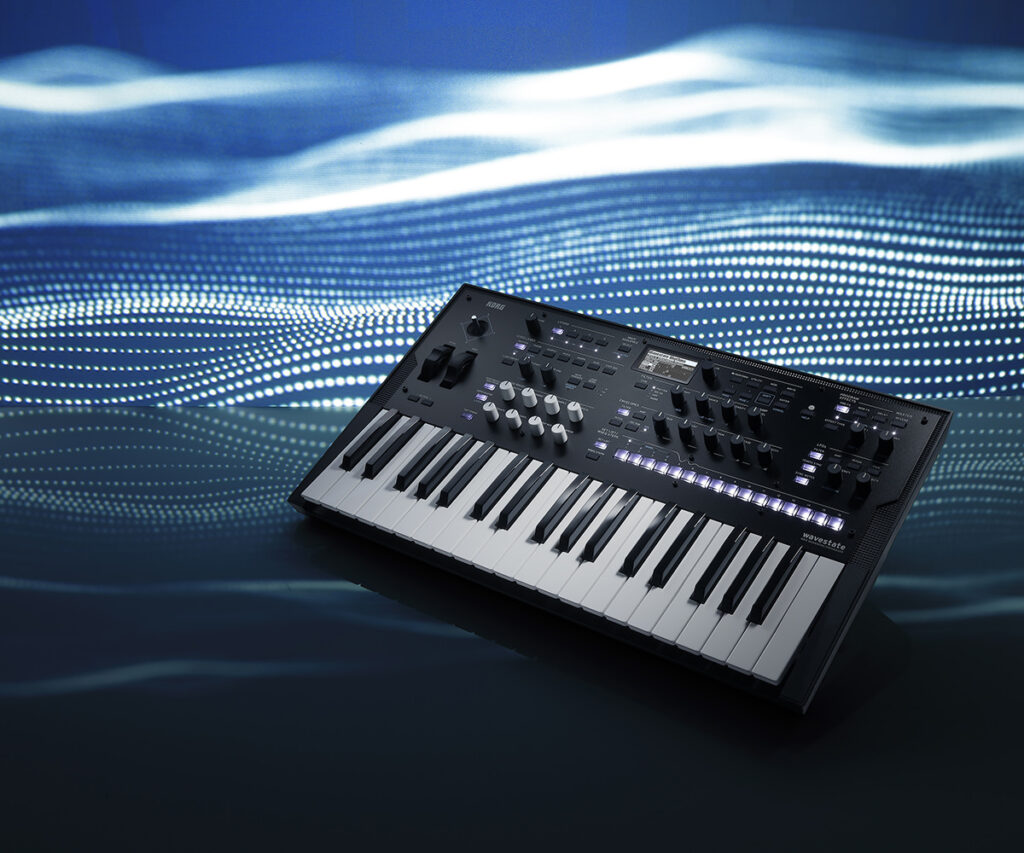
3. Polyphony: It describes the number of notes that you can play at the same time, without getting the notes cut off early. Choose pianos with maximum polyphony to create a power-packed music tune with several songs layering with each other.
4. Keyboard: The Keyboard plays an important role in learning the piano playing technique and in acquiring finger strength. Make sure the piano keys will have an exceptional build quality and also feel realistic to the touch. Choose pianos with weighted hammer action keys which are slightly graded as well.
5. Portability: This helps in porting the piano to the school to learn the lessons and port it back home for practice.
Check out: Best Digital Pianos for Small Spaces and Apartments
What Should a Student Know Before Starting to Play a Digital Piano?
It is really helpful to have some notion of what to anticipate before beginning piano instruction. Both the time investment and a truthful assessment of your own interest should be evident to you.
- The piano, as already mentioned, is a very adaptable instrument. Daily practice in addition to taking piano lessons is the most effective strategy to learn the piano. Therefore, having a home instrument is necessary before beginning piano instruction. Even while you might not initially need a costly grand piano, an upright piano is a wise purchase. The greatest option if your home is small is to spend your money on a high-quality digital piano.
- Both wonderful acoustic and digital pianos are readily available, and each has its own set of benefits. Digital pianos are less expensive, easier to carry and take up far less space than an acoustic piano. The digital pianos are always in tune, and you may use headphones while practicing in silence. The action of an acoustic piano also isn’t exactly duplicated by digital pianos.
- However, a sturdy digital keyboard with hammer action will assist you in building finger strength and dexterity for the occasions when you get to play an acoustic piano.
- You won’t be able to develop the necessary dexterity for your fingers and hands without persistent practice. Set aside time to practice each day so that your proficiency level increases quickly.
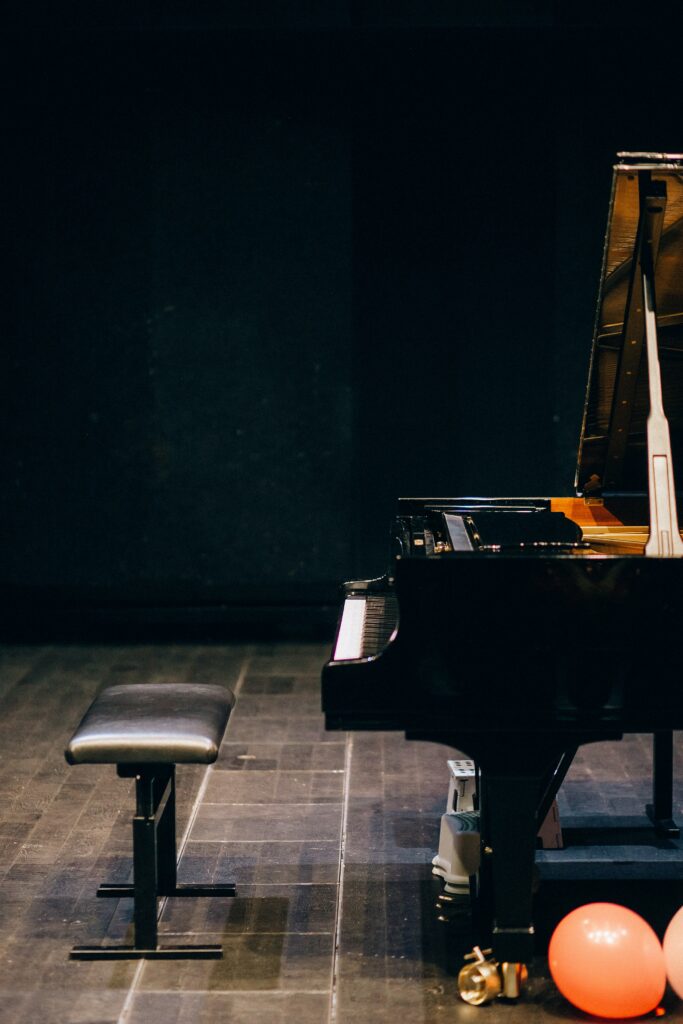
- The key to success is to create challenging but doable goals. Set a deadline for yourself to master your instrument to a certain level of proficiency. Your morale will be tremendously boosted and you’ll be inspired to set new goals if you accomplish your specified goals at every level inside the time frame you set for yourself.
- If your hands do not immediately move correctly, do not be alarmed. The dexterity required to play the piano requires effort and time to master. You must put in the time to educate your hands to react to your brain and emotions, just like any other muscle. After all, making music involves more than just moving your body. You must teach your hands to react to your feelings in order to accurately communicate the right moods and sensations in your music.
- You will learn many new ideas and concepts as you begin your piano adventure. You’ll probably be experimenting with an instrument you’ve never used before. Question more experienced gamers for suggestions. Talk to other musicians and listen to interviews with great pianists. Read up on the piano’s past. Do not anticipate mastering everything right away. Keep an open mind and continue to learn more about your instrument and music as a whole.
What Songs Are Easier for a Student to Play on the Digital Piano?
- Twinkling Twinkle Little Star is constantly a favorite, particularly with younger students, but students who are just beginning out can also gain from knowing this. First, place your right thumb on the letter C. Except for the highest note, which is just one note above your little finger, all the notes you need are under your fingers.
- One of the greatest basic piano pieces to learn if you want to start playing some classical music on the piano is Bach’s Prelude in C Major. It requires two hands to sound good and moves all around the keyboard more. This is due to the fact that although the melody is shared across the hands, no consecutive notes are performed simultaneously. In other words, even while you are using two hands, you never play more than one note at once. Since the notes in the left hand are kept down while you play those notes in the right hand, you may not realize when listening to the song that no two notes are played simultaneously. Every note pattern occurs twice in this tune, which is another fantastic feature. The following step is to repeat the pattern once you have it in each measure and have played through it.
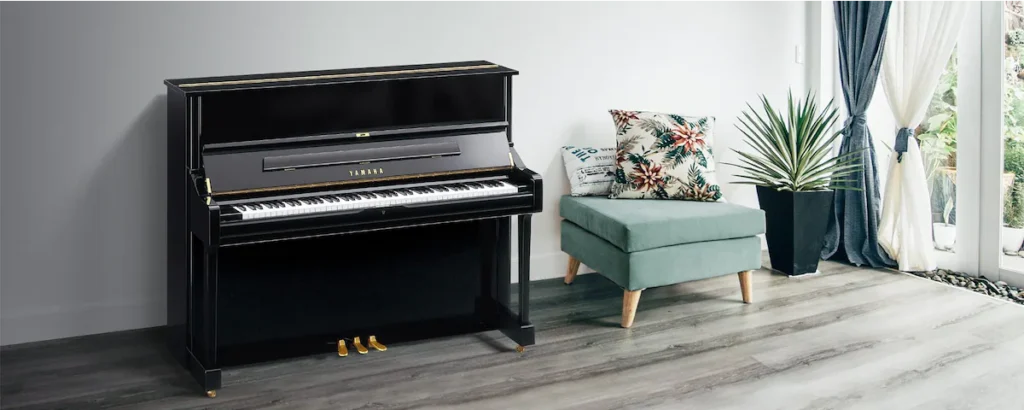
- You might be prepared to take on Beethoven’s Fur Elise if you have mastered Bach’s Prelude in C major. Once you feel confident playing with two hands, it’s one of the best simple piano tunes to master.
- A few black notes are used in Fur Elise, and some of the note jumps are longer than in Bach’s Prelude in C major, but if you’ve practiced these beginner-friendly easy piano pieces, you should be up to the task. The best part of Fur Elise for novices is the opening movement. Aim to play only the first section for a time because the second section is a significant technological leap.
What Are the Best Songs Students Can Play in a Piano Competition?
- Beethoven’s “Moonlight” Sonata is best recognized for its first movement, which is so breathtakingly beautiful that composer Hector Berlioz referred to it as a “lamentation.” However, it couldn’t be more dissimilar from the third movement, an incredible finger workout.
- One of the most well-known pianists of her era, Clara Schumann regrettably turned away from writing music, claiming “I once thought I had artistic ability, but I have since abandoned this notion; a woman must not want to create because no woman has ever been able to accomplish it. Do I have to hope I’m the one? “. She demonstrates her extraordinary pianism and melodic inventiveness in this lovely piano concerto.
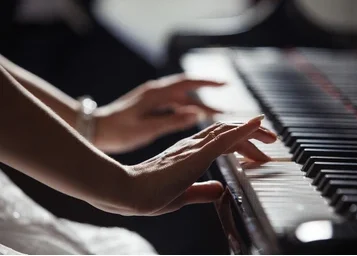
- Oddly, “Clair de Lune” also translates to “Moonlight,” although Beethoven’s Romantic classicism and Debussy’s Impressionism are worlds apart. Don’t be deceived by “Clair de Lune’s” seeming simplicity; it took Debussy 15 years to complete the third movement of the Suite Bergamasque, and the outcome is a piece that, despite its apparent simplicity, demands the best performance from its players. If you get it properly, it will highlight even the most talented pianists.
What Are the Benefits of Playing Piano in a Student’s Life?
- When playing the piano, you must pay attention to a variety of factors, including rhythm, pitch, pace, note duration, and many more. Despite the fact that you are engaged in an activity you genuinely enjoy, this is essentially a multi-level exercise in attention.
- On the piano, it takes time and effort to learn new songs. You’ll probably practice a tune for a few weeks before you can play it effortlessly off memory. You stay motivated, develop patience, and sharpen your tenacity as you anticipate playing the music. These abilities will always come in handy when you are faced with challenging assignments at school, university, or the workplace.
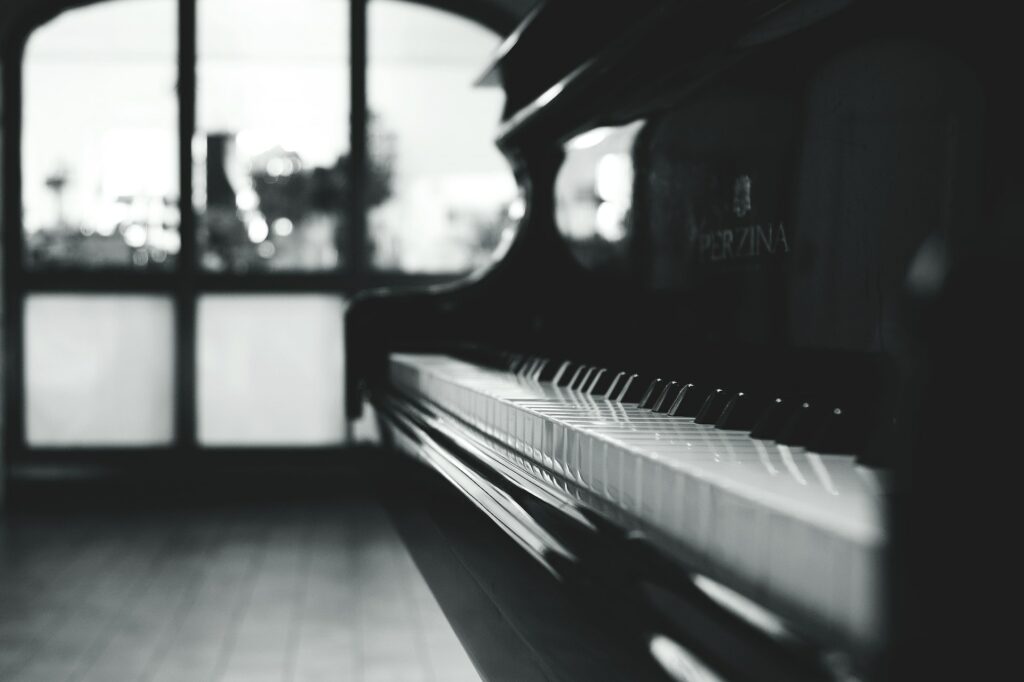
- It improves your listening skills to play the piano. When you converse with others, these are equally crucial. In addition to facial expressions and body language, voice tone, speech rate, and melodic quality are other ways that people communicate their emotions. It is not unexpected that studies have found that musicians are actually more intuitive in interpreting the feelings of others. People who play an instrument are better listeners.
What Are Some of the Online Programs That Can Help Students Boost Their Skills and Knowledge?
- The characteristics of Flowkey make learning to play the piano online simple and enjoyable. By following step-by-step instructions, you’ll quickly learn the fundamentals. Although the app’s interface is reminiscent of a game, the video lectures are well-made, lucid, and educational. Sheet music and hands on the piano will be shown above. You will first be prompted to select a level. You’ll then begin the course and pick songs according to your proficiency.
- Most computers can run Playground Sessions, but you’ll need a digital piano or MIDI keyboard. You will have access to a plethora of video lessons organized by expertise level once you pay for your subscription (it’s fairly reasonable). You’ll experience the process as though it were a game. Scores, badges, and awards will be awarded to you. More importantly, you’ll also get immediate feedback, letting you know if your time and notes are accurate. This kind of feedback might not be very detailed, but at least you’ll know whether you’re doing it correctly.
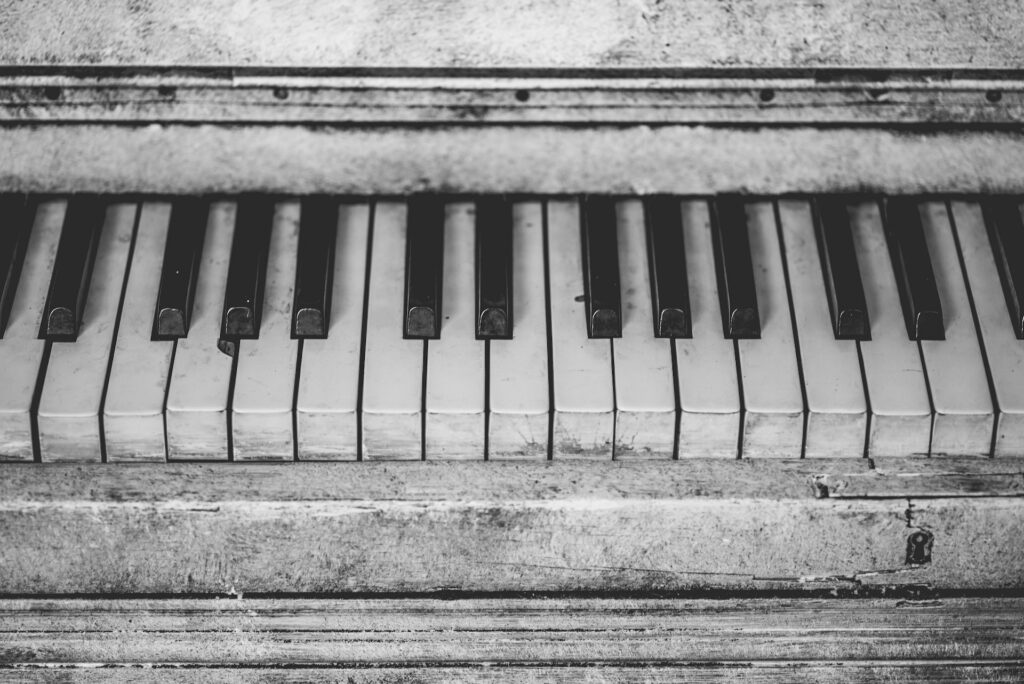
- Skoove, like Flowkey or Playground Sessions, first observes your play and gives comments. It may be linked up using Bluetooth, MIDI, or a microphone. With the split-screen technique, you may learn notes while watching someone play the piano. Video lessons are informative, engaging, and simple to understand. To cater to your level of experience, courses are categorized into Beginner, Intermediate, and Professional categories. You’ll get access to exclusive courses and more music classes if you sign up for a Premium membership.
Final Words
Gigging musicians should pick the top-performing piano as it decides the future of their musical journey. We hope our product recommendation and buying guide helps you in picking up the best digital piano for students. Studies have found that spending time on the keyboard is good for one’s mental state; those who compose music report less loneliness, worry, and depression. Furthermore, it has been proven that practicing the piano greatly reduces tension and provides numerous chances to boost self-esteem.
Our Recommendation
It performs exactly the same action as the more expensive FP-30 model and offers astounding value. One of the most realistic-feeling keybeds in this price range is produced by the distinct weighting of each of the 88 keys, just as you’d find on an acoustic piano. With split mode, you may have a four-octave piano at either end of the keyboard, which is perfect for teaching. This is made possible by Roland’s unique SuperNatural piano technology, which produces an incredibly detailed and subtle sound. Unfortunately, we discovered that the speakers occasionally had a feeble sound to our ears. Still, given the price, there had to be at least one drawback. Because it supports MIDI over Bluetooth and USB, the FP-10 works well as a MIDI controller keyboard and plays well with Roland’s Piano Partner 2 app.
You Might Also Like
- Best Digital Piano for Classical Pianists
- Best Digital Pianos Under $2000
- Best Digital Pianos for Intermediate Players
- Best Digital Pianos Under $5000
- Best Digital Pianos for Advanced Pianists
Frequently Asked Questions (FAQs)
1. How Much Do Online Piano Lessons Cost on Average?
You should expect to pay between $20 and $200 per hour for online piano instruction. Depending on the kind of lessons you are taking. For instance, paying for an app or an online piano school is more expensive than hiring a private piano instructor. Some websites even provide free trials or online piano instruction.
2. Is Learning Piano From an Online Site Efficient?
Affordability and convenience are just two advantages of taking piano lessons online. The finest piano learning apps make use of cutting-edge teaching techniques that will accelerate your progress as a pianist. Your perseverance and consistent practice, nevertheless, are equally crucial.
3. What is So Special About the Song “Rhapsody in Blue”?
Although ‘Rhapsody in Blue wasn’t universally praised by reviewers in the 1920s, its fusion of jazz and classical style helped Gershwin establish himself as a serious composer. Jazz elements are what give the iconic song its sensuous and decadent nature.
4. How Does Playing the Piano Enhance Your Memory Power?
Your brain is stimulated while you play the piano. The activated areas of your brain enlarge and become more active as you learn and play songs. Musicians have more developed brain regions than non-musicians, especially those that store audio information. As a result, learning to play the piano improves your memory for aural data.
5. Is It True That Playing Piano Brings Psychical Health Advantages?
Even though you’re sitting in a chair, piano playing is a workout all on its own and benefits players of all ages physically and physiologically. For instance, consistent piano practice helps young children and their developing brains strengthen their fine motor abilities and hand-eye coordination. According to research, older persons who take piano lessons significantly boost their levels of the hormone HGH, which reduces the negative consequences of aging.


